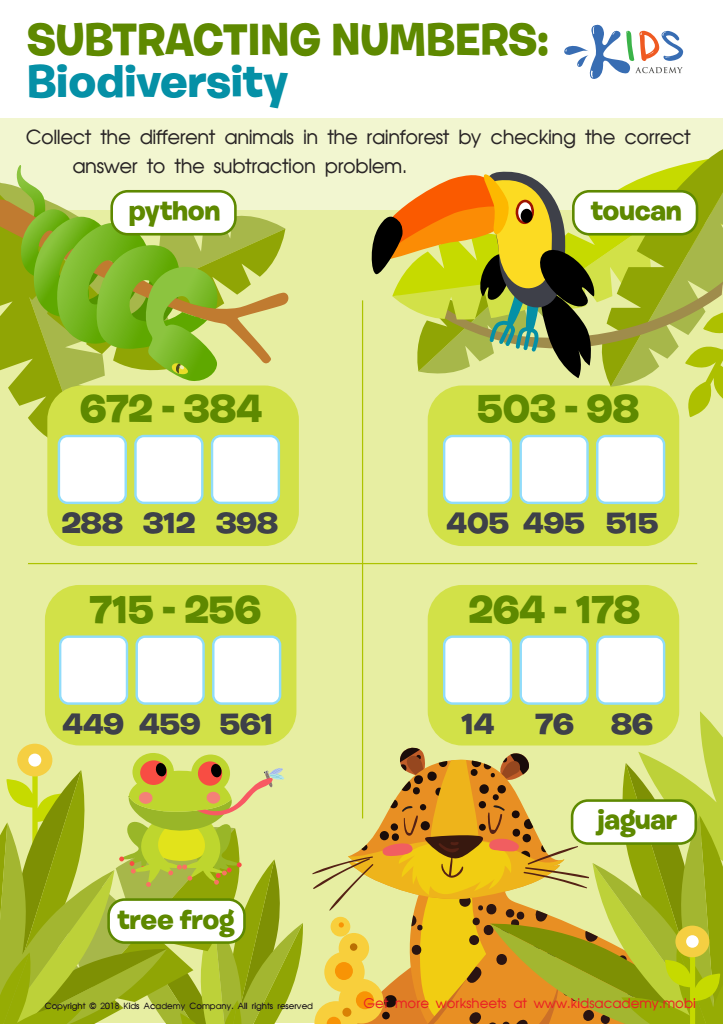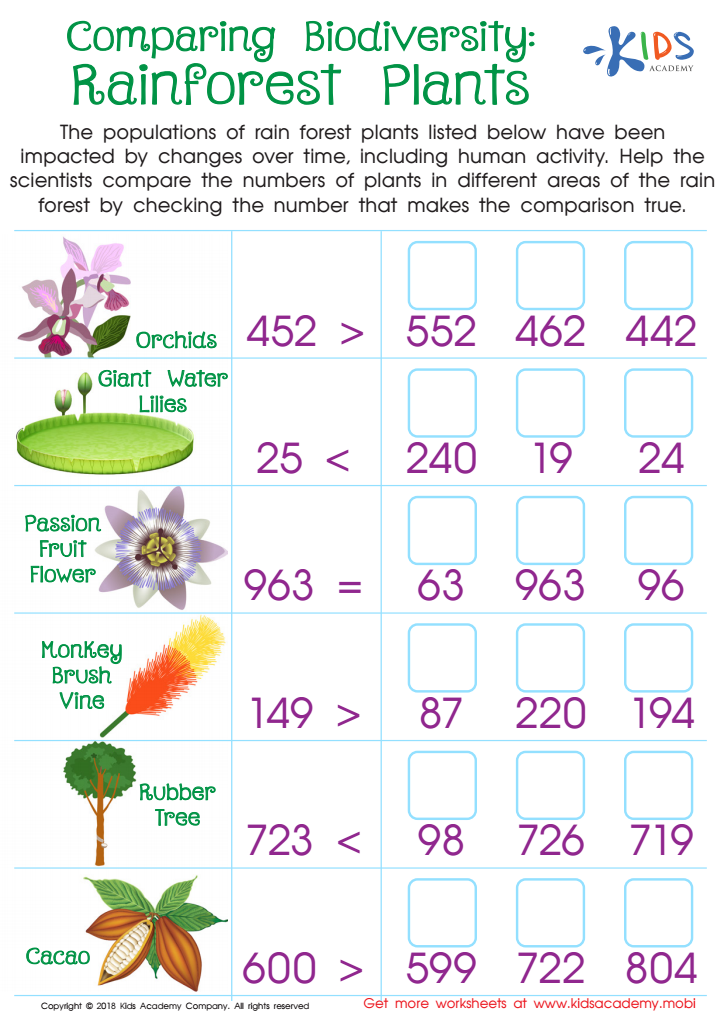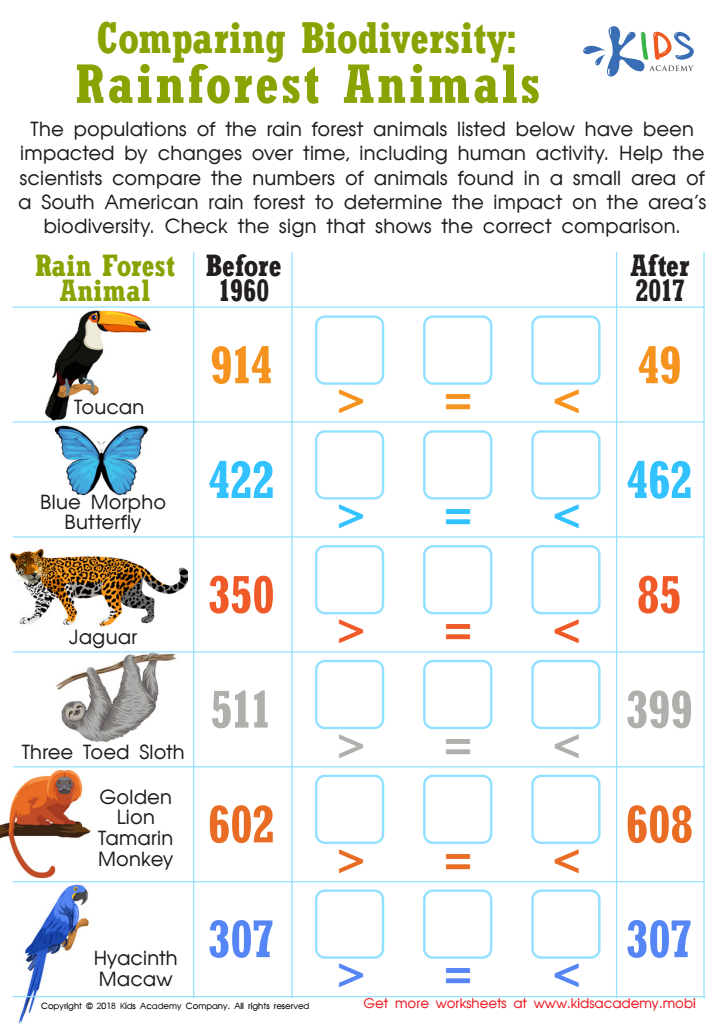Understanding biodiversity Math Worksheets for Ages 6-7
3 filtered results
-
From - To
Explore the wonders of nature with our "Understanding Biodiversity Math Worksheets" designed for ages 6-7! These engaging worksheets combine essential math skills with exciting lessons about plants, animals, and ecosystems. Children will enjoy counting different species, sorting by characteristic traits, and solving math problems inspired by our diverse natural world. Each activity encourages critical thinking and sparks curiosity about the environment while ensuring that students develop strong numerical and analytical skills. Perfect for both classroom use and at-home learning, these worksheets provide a fun, educational opportunity to appreciate the richness of biodiversity.


Subtracting Numbers: Biodiversity Worksheet


Comparing Biodiversity: Rainforest Plants Worksheet


Comparing Biodiversity: Rainforest Animals Worksheet
Understanding biodiversity is crucial for young learners, as it fosters an appreciation for nature and develops foundational skills in mathematics and science. For children aged 6-7, amalgamating biodiversity and math can be particularly educational. For example, counting different species of plants, animals, or insects can sharpen basic arithmetic skills like addition and subtraction and help classify and sort objects—crucial early math competencies.
Parents and teachers play pivotal roles in nurturing an early interest in this subject. Introducing children to the wonders of nature at a young age encourages curiosity, nurturing a sense of awe and respect for living organisms. Such experiences can be tremendously impactful, often serving as the first step toward eco-conscious habits that can last a lifetime.
Additionally, activities centered around biodiversity can help kids understand more abstract concepts like ecosystems and interdependence. For instance, explaining how different plants and animals rely on each other for survival can beautifully illustrate foundational math principles like measurement and ratios in an easy-to-understand manner.
Integrating biodiversity with math also addresses various learning styles. Some students might be more engaged through tactile activities like observing leaves and insects, whereas others might respond better to discussions and stories. By weaving these fields together, parents and teachers enrich the educational experience, making learning both fun and impactful.
 Assign to My Students
Assign to My Students






.jpg)









